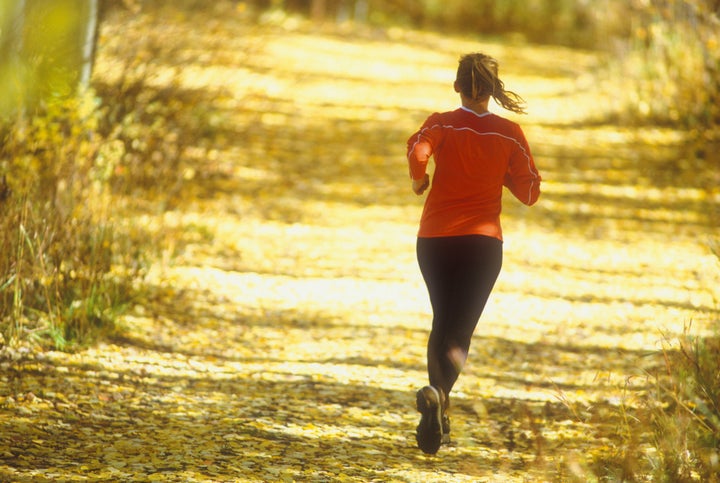
"Yo, what type of shoes should I run in?"
Whether in a medical conference, academic setting or bar, once people know my line of research, that's typically the first question that pops up. Often times I feel my response is a bit coy, mostly because it would take longer to answer than what people have time for. Although there's no hard and fast answer for everyone, I personally believe it comes down to the Three Ps.
Three Ps
We're all different -- in the way we speak, the way we think, and, unsurprisingly, the way we run. Thus, when determining the optimal running shoe, it's imperative to consider your Three Ps: pattern, passion and purpose.
(Foot) Pattern
There are three basic foot patterns: normal, overly pronated (i.e., flat-footed) and overly supinated (i.e., high-arched). Most individuals present with a normal foot type and during traditional heel-to-toe running demonstrate rapid pronation upon heel-strike. In order to slow the rate of pronation, these individuals would be best served by a stability shoe, which is characterized by a heel counter (i.e., a stiff cup around the heel), a medial wedge and a dual-density midsole.
Relative to a stability shoe, a motion control shoe is less flexible due to an increase in dual density foam and a more rigid heel counter. This type of shoe is ideal for people with flat feet, as it's designed to help compensate for the over-pronation.
The arch of the foot is supported by a thick band of connective tissue called the plantar fascia, which becomes taught -- and thus helps to absorb shock -- when the foot bears weight. In people with high arches, the foot doesn't pronate sufficiently, negating some of the shock absorption. A neutral cushioned shoe compensates for this through encouraging foot movement by maximizing flexibility (via lacking a medial wedge and presenting with a softer midsole and heel counter).
Passion
There are a multitude of different running styles that people are passionate about: heel-to-toe, pose, chi, barefoot or minimalistic, and alterations in cadence. The common denominator in all of these running forms is a manipulation in the method of foot strike. Teachers of pose, chi, and barefoot running promote forefoot strikes, while an increase in running cadence typically results in an inherent change from a heel-strike, to a mid or forefoot strike for controlled running velocities.
The method to impacting the ground is influenced by footwear. In fact, relative to traditional running shoes, when people run barefoot, or in minimalistic shoes, they naturally shift to a more anterior strike pattern (likely in order to prevent collision of the heel with the ground). It appears that shoes with reduced heel-to-toe drops may help promote this. The heel-to-toe drop is a measure of the difference in the height of the shoe from the heel to the forefoot. Traditional running shoes have drops between 8-12 mm, whereas minimalistic shoes can be as low as 0 mm.
In order to determine the optimal drop, it's important to recognize how you impact the ground when running. Although many people believe they are forefoot strikers, it's been shown that approximately 75 percent of runners run heel to toe, whereas 24 percent are mid-foot strikers, meaning that they strike the ground with the middle of their sole. A negligible portion of runners run forefoot. In order to prevent excessive strain to the calf and Achilles tendon, it's recommended that heel-strike runners who yearn to run in shoes with smaller heel-to-toe drops transition to them over a period of time (with shoes with increasingly smaller drops).
Purpose
With technological advancements in the footwear industry and an associated increase in the amount of scientific research concerning footwear, we now have a greater understanding regarding the attributes of shoes that can help runners address their specific purposes. For example, a bowing-out of the knees may potentially lead to degradation of the medial meniscus (cartilage within the knee), whereas a falling in of the knees may result in lateral meniscus degradation. A lateral or medial wedge, respectively, may help to compensate for these mal-alignments. Similarly, shoes with a heel flare -- an outward projection on the lateral (and sometimes posterior) aspect of the shoe -- may result in an increase in pronation during the initial stance phase of running. Although it will add weight or width to the shoe, it may limit the potential of developing anteromedial compartment syndrome. Relatedly, increased cushioning under the heel may also add weight to the shoe, however, it likely will take pressure off the plantar fascia, and is thus often recommended for those with plantar fasciitis.
A recent introduction to the running market is minimalistic footwear. The Nike Free has a foam based outsole that can splay. As a result of its minimal structural support, it may help in developing the intrinsic muscles of the foot. In contrast, the Vibram FiveFingers and New Balance Minimus have rubber outsoles and appear designed to optimize the barefoot running experience. Similarly, and as mentioned above, relative to heel-strike running, shoes with reduced heel-to-toe drops that theoretically promote mid or forefoot strikes will likely result in an increased demand to the ankle and a reduced demand to the knee (and their supporting structures, respectively). The caveat of all of these shoes, however, is that they may require training to the foot and calf and/or a transitional period prior to using them exclusively for running.
So I was recently having dinner with a friend of mine at this Chinese restaurant, and his fortune read "There should only be one thing coy in the room, and that's the fish." So while I hope I provided a sufficient running shoe guideline, when you asked me at the bar last Friday about what type of shoes you should run in, aren't you glad there were no fish around?
For more by Rami Hashish, DPT, click here.
For more on fitness and exercise, click here.